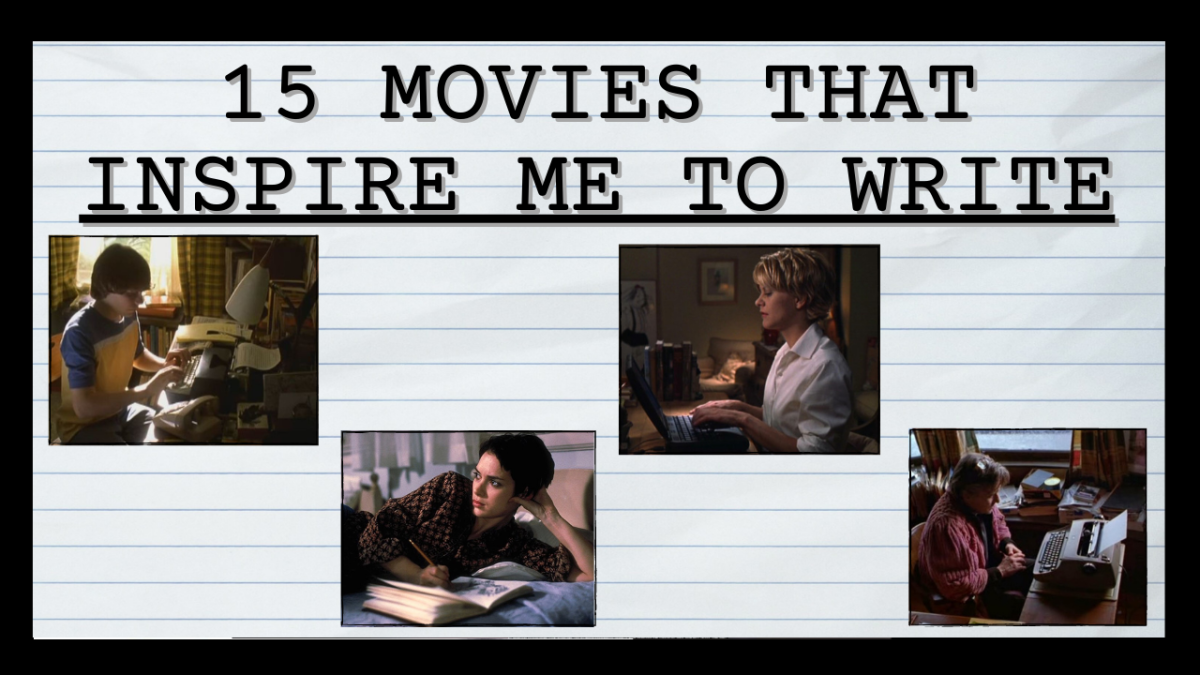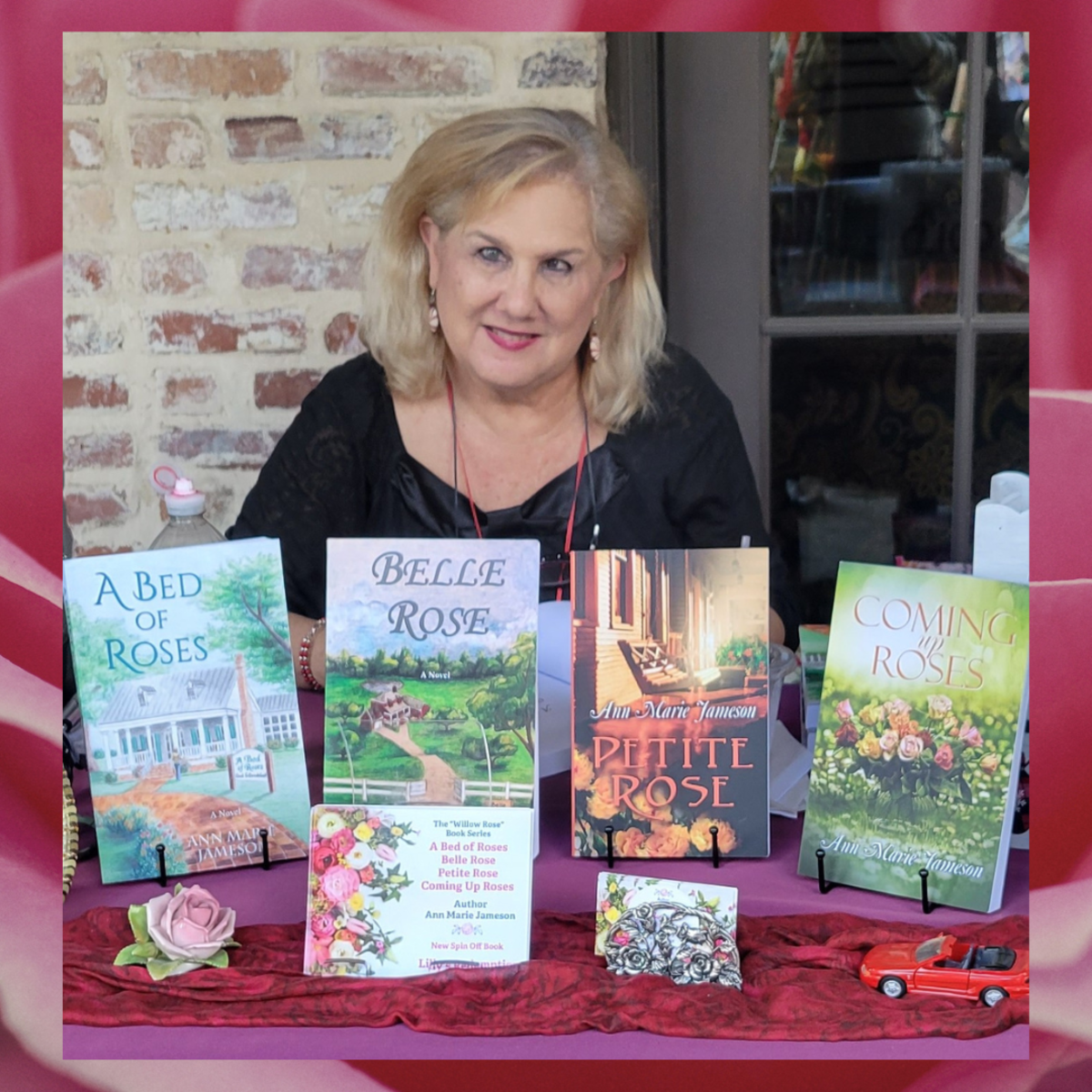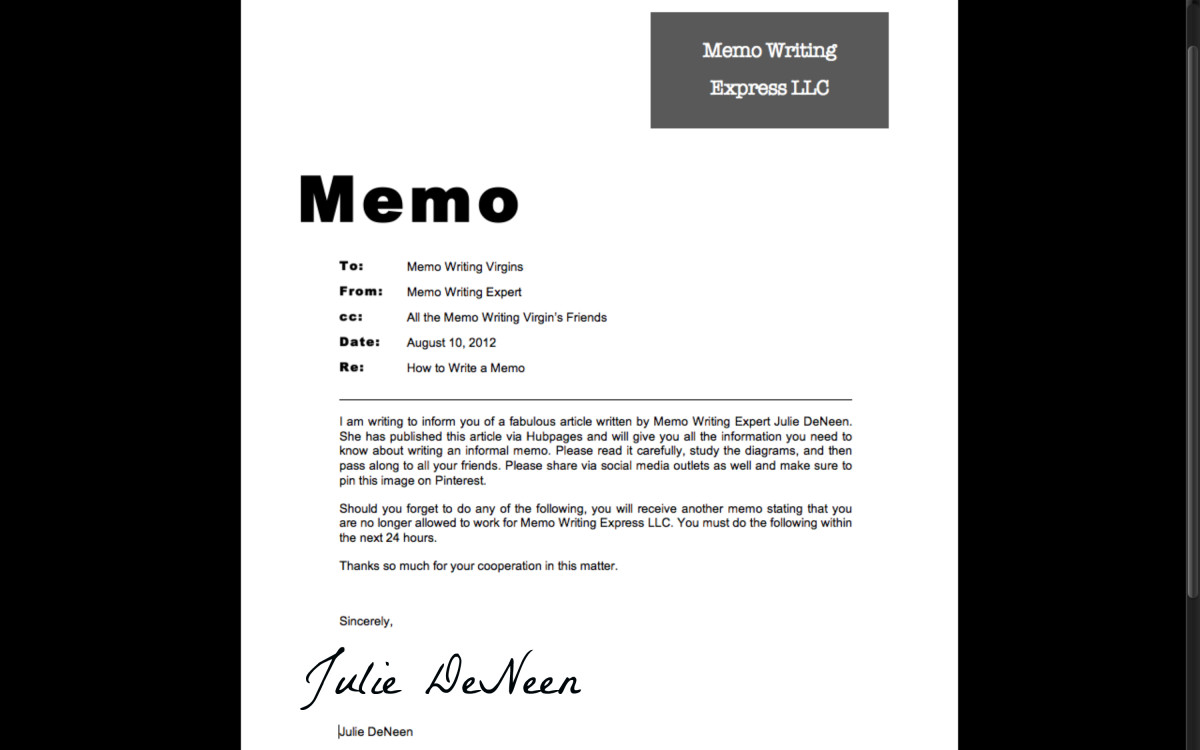Recap and How to Write a Good Original Character
The Last One!!!
Week #16: Recap and How to Write a Good OC
Ah, sweet! The final Mary-Sue blog. It’s been … exhausting, actually, but enough of that for now. Time to recap! (And it figures that the internet won’t work AGAIN!!!)
PART 1: MEET THE MARY-SUE---AGAIN!!! SLIGHTLY ABRIDGED VERSION!
So, for a recap; what is a Mary-Sue? Well, a Mary-Sue (or Gary-Stu, her male counterpart) is a fictional character that is too perfect in all things, appearing in original but somewhat more frequently in fanfic … okay, okay, a lot more frequently. The Mary-Sue is young, very attractive, highly skilled for someone their age, often has an unusual name, often has the main male canon character falling in love with her, is extremely powerful, well-liked by everybody, is the only one who can defeat the bad guy, is just oh so sweet the entire time, and typically dies at the end of the story. The presence of a MS or GS generally causes great outrage amongst the readership who then deals out savage responses. (Week 1)
People write characters this way largely for six big reasons:
1) New to writing: the writer hasn’t ever actually written a story before. They don’t know how to formulate a plot or construct a proper character, so they decide, “Eh, what the hell, I’ll go with it.” This leads to overdeveloping a character too much, therefore unintentionally creating an MS.
2) Self-insertion: a fairly common one, a self-insert is when the author literally inserts her/himself into the story as an actual character. A veiled insert is when the author inserts themselves but changes their name and a few details of their appearance and gives themselves kickass abilities. Usually both types result in the main canon character falling in love with them. Many people who write insert stories are really trying to escape their realities.
3) Influenced by the media: people write about characters with extreme strengths, talents and complicated histories because we’ve seen so much of that from books/games/movies/TV/comics and therefore we assume that’s the way a character has o be written.
4) A need for a hero: because there are so few really good female heroes in fiction, many people create a character to fill that void.
5) Impress the audience: people are worried that their original character sound pathetic compared to the canon characters, so they amp them up—a little too much.
6) Matching the OC to canon characters: rather than make a Super Sue, writers sometimes try to match their characters’ strengths and powers with the canon characters, but the result is still the same—Sueism. (Week 2)
Mary-Sue is often defined by the way she looks—if she’s gorgeous, people assume she’s a Sue. To avoid that the writer should make her look reasonable and space out the physical description over a few pages as opposed to cramming it all in one paragraph. Dialogue can help establish a character’s identity, but is they’re using modern vernacular in an older setting, it sounds Sueish. So does flinging in terminology from a foreign language that you can’t speak, because then it just becomes confusing for people who do understand it.
MSs are generally young teenagers with adult capabilities, which is a result of teenagers writing about kids their age because they don’t know how to write about adults. Things such as super powers, magic, intelligence and talents should be kept at a reasonable level to avoid Suedom. An MS shouldn’t be happy and perky all the time because that’s unrealistic. MSs often have unusual names and care should be taken to avoid anything that’s so outrageously misspelled that people have difficulty understanding what it is, or the use of descriptive/virtuous names (i.e. Hope) or names of gods (i.e. Aphrodite) because it’s really not that original in the long run and can sound boastful. Characters should always be relatable and show appropriate emotions, and they don’t have to be drop dead funny. (Week 3)
In addition to the Mary-Sue Syndrome, there’s also a thing called an Anti-Sue Syndrome. That’s when somebody is so afraid that their character is a Mary-Sue that they give her all kinds of extraordinarily horrendous flaws in the hope that it will make her less Sueish. Ironically, this actually makes the character ever more of a Mary-Sue. (see Week 5 for way more)
PART 2: MS/GS VILLAINS—BAD GUYS WHO WON’ STAY DEAD
Week 4 was dedicated to the Mary-Sue/Gary-Stu villain—yes, they do exist. A villain is evil through and through, dedicating their whole lives to the pursuit of just making somebody else miserable. An MS/GS villain is that times a kabillion. They’re hard to defeat, extremely smart, and so smug that it’s sickening.
Some of the basic MS/GS villain traits are:
· Evil
· Cruel
· Easily angered
· Enjoys seeing people in physical or emotional pain
· Very intelligent
· Sadistic
· Strong physically or in magic/cyborg/mutant power
· Designs the best elaborate plans to fool the hero
· Has a powerful or mystical weapon
· Insane
· Seductive sexually/emotionally/logically
· Repeatedly comes back from the “dead” (you know, like again and again and again and again and AGAIN?)
· Monstrous in form, logic or behavior
That aside, the villain can’t just be all “grr” for “grr’s” sake. A villain has to have motives for what they do and reasons for why they’ve become that way. Otherwise, they’re just another jerk. They should also be more powerful than the hero, but not so damned powerful that they’re practically unstoppable. Every villain has a weakness and the final fight shouldn’t go on for five hundred pages (damn you, Tad Williams!!!!) (Week 4)
PART 3: LAYING THE BLAME—MYTHOLOGY AND MEDIA
To say that Mary-Sues and Gary-Stus are a new phenomenon is bull. To say that Mary-Sues and Gary-Stus don’t exist at all in the media is an even bigger pile of bull. Put those two statements together, and you have so much bull it’s like a herd of bison just galloped by.
First of all, for years we’ve been inundated with characters that fit the Sue stereotype. We’ve seen so freaking many of them that, when we decide that we want to write a story, we inevitably start to base our characters off of what we’ve learned. (Week 6)
Second, we can trace MSs and GSs all the way back to mythology and every culture in the world. Hercules, King Arthur, Sigurd, Odysseus, Princess Furball, Penelope, Cu Culhainn, Tom Thumb, Morgan Le Fey, Beowulf, Mwindo (Congonese mythology), the Monkey King, Lancelot, Gretel, Brynhildr, Xbalanque and Hanuhpu, Gilgamesh, Horus, Ishtar, Monster Slayer (Apache legend), Beauty, Morgana (from Ali Baba and the Forty Thieves), Coyote, Anasazi, and Rose Red—to name just a few!—are all Sues and Stus. They all display typical Sue traits such as super strength, high intelligence, great physical beauty, near invulnerability, and great skill. All of these mythological characters (and a helluva lot more, let me tell you) have inspired the way we’ve created fictional characters. It’s ingrained in our culture and influences the way all of us write our characters. (Week 7)
PART 4: ROMANCE AND THE OTHER STUFF I’M NOT SUPPOSED TO SAY
If you’ve ever read fan fiction, then you know there’s quite a bit of romance-themed fanfics out there. Just a second ago I hopped onto Fanfiction.net to see how many romance fics I could find in one cartoon. Seeing that Inuyasha had over a hundred million stories, I ran the filter to see how many romance fics I could get. I came up with 44,662! And 20,294 of those had an “M” rating!
What’s the difference between romance and erotica? Basically put, romance is just a love story—no sex. Erotica (good erotica) is a romance story with sex. Romance stories tend to be fluffy while erotica is gritty, dealing with more human-like characters. Both romance and erotica have particular styles of storytelling, with romance being formulaic and erotica being more creative and spontaneous. (Week 8)
Why do so many people write romance/erotic fan fiction? There are different reasons, really. Some of the people writing these kinds of fanfics are teenage girls who are dealing with powerful needs and have no way to express/experiment safely with them except to write it out. Other people write romance/erotica because they have a great idea, they’re sick of waiting for their favorite canonical character to quit moping over the girl he’s never going to get, they feel bad for the character who doesn’t have anybody yet, they hate predictable couples and, well, sometimes they’re just bored. (Week 9)
Lots of mistakes can be made with a romantic/erotic fanfic, though. People writing these stories suddenly self-insert, making the canon characters that they have a crush on suddenly act out of character, behaving the way the author would want their lover to behave, or depicting the fantasy wedding that the author would want to have. Sometimes people use a wedding as a lame excuse to justify a sex scene in their fics, or they have this twisted notion that FICTIONAL characters HAVE to remain virgins until they’re wedded—because that’s not right otherwise—or they do it because they’re afraid of getting harassed for it. Other times people use marriage and/or sex just to give their pairing a battalion of babies. And then there are a great many who write erotic fics because, “well, everybody else is writing them,” and they think that means that they should to. That’s pretty high up there on the fanfic-stupidity Richter scale (Week 10.)
PART 5: REAL QUICK—CANON SUE
A canon Sue is when somebody writes a fanfic featuring a canon character that they really like, but gives them strengths and skills that the wouldn’t ordinarily possess in their universe. Sometimes the author does this unintentionally (just as a new writer sometimes overdoes their character, a new writer can overdo a canon character), and sometimes because they actually haven’t taken the time to do any research on the character and they’re just winging it. Frequently, the author amps up their favorite canon character because they’re sick of them being the weakest of the group, but there are times when an author does a veiled insert, pretending to be this particular character but not acting the way the character ordinarily would (Week 11.)
PART 6: SELF-INSERT REHASH
One last time with the inserts!
1) Self-insert: The author literally inserts her/himself into the story as a character. They wind up there via a bump on the head and waking up in a new world, being transported there via portal or transport, are already living in that universe or made a wish to be taken there. They act relatively the same as they do in real life, but are sometimes slightly more bold. They’ll be in love with a canon character, but that doesn’t typically pan out.
2) Veiled insert: The author inserts themselves into the story, but under a totally new identity. In the story they act the way they wish they could in real life, and often have extraordinary skills and powers. They and a canon character will fall in love and the might have an erotic scene.
3) Character disguised insert: Much like the veiled insert, but this time they disguise themselves as an actual established character within the series. Character disguised inserts don’t really follow the insert formula, but they give themselves away by acting out of the character’s character.
4) Unintentional insert: An unintentional inset is when somebody creates a character, and then belatedly realizes that the character sounds exactly like them. Again, I don’t know how much I believe of this one, but since so many published authors have claimed this, I thought that it’d be safe to put in anyway. (much more in Week 12)
PART 7: THE NAZI LITMUS TEST.
Just don’t take them. (Weeks # and 12)
PART 8: ASSASINATING THE SUE
One trait of a Mary-Sue is her penchant for dropping dead at some point in the fics. That’s not good, but people write that way because(switching to letters now … tired of bullets and numbers):
A) We’ve so many stories of heroes dying that we’ve grown up thinking that’s the way you’re supposed to write (it’s not)
B) Tons of other people have killed off their characters, so we feel inclined (read: pressured) to do the same
C) Some people are actually feeling suicide and they expressing that/experimenting with that in writing (worrisome), or they’re killing themselves off in a self-insert fanfic to see how people will react (they need a good swift kick in the head for this one)
D) People will sometimes kill off a character after experiencing the death of a loved one because they have no other method of showing how upset they really are
E) People get sick of their characters (that’s just dumb times 20)
F) The writer might be punishing themselves by proxy
G) It’s not unusual for people to kill off their character to show how brave they are
H) The writer kills off the Sue to avoid harassment from the audience
I) And sometimes people kill their characters because they can’t come up with a good ending. (That’s … that’s just sad.)
Furthermore, death in mythology has heavily influenced death in modern storytelling, which has heavily influenced the way we all write in turn. (Week 13)
PART 9: HOW TO HANDLE CRITICISM
If you write, you will—I guarantee it—get criticism in one form or another. Some of it might be helpful, but a lot of it will be annoying at best. The best thing to do is not to immediately react with emotion, because that will start a flame war that’s not worth getting into. Always act with dignity and respectfulness, and don’t be afraid to ignore a nasty message. (Weel 14)
PART 10: MARY-SUE IN YOUR ORIGINAL STUFF
Mary-Sue can just as easily show up in your original fiction as she can show up in your fanfic. The complicated … no, sorry, the stupid thing is that people largely don’t care if your original character is a Mary-Sue, so long as they’re not an over-the-top Super Sue and they’re believable and relatable, even though people on the internet as so much more unforgiving. Does it make sense? No, of course not. But luckily, there are ways to ensure that your original fic character comes out perfectly in your story (see Week 15)
PART 11: HOW TO CREATE A GOOD OC
Here’s a list (in no particular order) you can use to help you create a good original character for either fan or original fiction.
· The character must always be believable—everything about them, from their personality, their motives, their method of thinking, their rules, their morals, their behavior, it all has to be believable, otherwise people are going to get fed up with a character that sounds fake.
· The character must always be relatable—your readers have to relate to what your character is feeling and thinking. It humanizes the character, and makes your readers invest their emotions in them (for example, the hero is running away from a ravenous werewolf and is terrified. You want your reader to feel terror for them.)
· The character must be likeable—there must be some good qualities that make your readers want to come back and read more
· The character must evolve—you can’t have a character that doesn’t improve and grow in some way over the course of the story. Otherwise, they’re little more than a stick figure. They’re boring, and readers have no reason to invest their time in a character that won’t learn.
· The character must have flaws, but they can’t be so numerous or so extreme as to make her/him pathetic, unlikable and/or unbelievable. The character, in the course of their evolution, should confront and/or overcome some of those flaws.
· The character must have weaknesses. They don’t have to be something major, but it should be something important that a villain can exploit or can cause the character to falter. A weakness can be an illness, a phobia, a curse, a tradition, restriction, allergy, or another person or thing.
· Your character’s appearance should be relatively normal. They can be attractive, but it’s best not to make them goddess-beautiful because it looks like wish-fulfillment.
· When describing your character’s physical appearance, spread it out over several paragraphs—don’t cram it all into one. Be descriptive—no point-blank statements like “She was tall.” That doesn’t spark the reader’s imagination.
· Don’t give your character too many powers. As far as fanfic goes, three major powers is best. In original fiction, five major powers is the most you can stretch it before it gets unbelievable.
· It’s better to have a character who is strong in some of her/his powers and weaker in others.
· A character can have martial training (make sure you’ve researched it), and they can have training in multiple arts (for example, in kenpo I’m learning hand-to-hand combat, but I’m also learning bo and escrima. Or, like my sensei, he’s studied Shaolin kenpo, both forms of tai chi, kendo, chin na, tae kwon do, muay thai, bo, escrima, nunchaku, and archery—and I bet there’s more I haven’t thought of.)
· Make sure your character’s age is appropriate for the storyline; a fourteen year old assassin makes a little more sense in a historical, scifi or fantasy novel than it does in anything set in the modern day.
· Use your best judgment when it comes to things such as romance, sex, marriage, children, and death. If you don’t feel right writing about it, I promise you, it will ruin the story.
· Always thoroughly research your character’s cultural background and history of their country if you plan on having them come from somewhere outside of the United States.
· AVOID insertion as much as possible—it’s better to create original characters. People aren’t interested in somebody else’s fantasy.
· AVOID giving your characters names that are difficult to pronounce/recognize and names that obviously clue in your reader to your character’s personality (Joy, Mercy). The names of deities (Aphrodite, Zeus) are best reserved for the gods themselves.
· AVOID basing your character on another character. It’s fine to be inspired by them, but you don’t want your character to resemble someone else’s so closely that you’ll get accused of theft.
· AVOID rehashing tired themes and clichéd characters when you can. Be inventive—people are looking for new things to capture their imagination.
· NEVER make the character stronger than the villain. They can work their way up to that level, but they can’t beat the bad guy the moment they meet.
· NEVER use rape for titillation.
· NEVER use a story-crutch (a weak idea used to motivate the character or drive the story.)
PART 12: THE END OF THE SUE BLOG?
Well for the most part, yes. I am officially out of Sue ideas, and having tried to post a blog a week for the last year and a half … well, it’s hard! And it really cut into my novel-writing time, even with all of my prepared notes. I won’t be doing a series like that again, but it got me to thinking that I have enough here to put together a book on writing. That won’t be for a while yet—I still have to get my other novels printed first. Sounds kind of pretentious to publish a book on writing when I haven’t even published anything yet.
But I’m not giving up on the blog entirely either. I have a few ideas for October, then after that, I’m fresh out. I’ll post, but probably not regularly.
Still, please let me know if the blogs have helped any of your stories at all—I’m curious to know! And I’m always open to ideas and questions too.
But for now—I’m getting back to my book!








